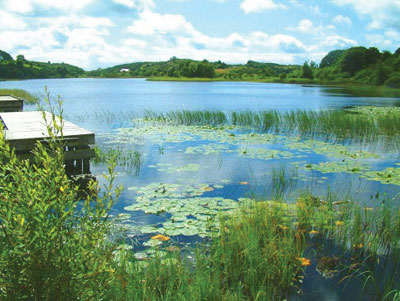| 2006 |

|
YEAR BOOK |
University of Ulster
|
New ideas for new legislation
|

To cope with these new challenges the University of Ulster has developed a statistical model to derive species optima along several different impact gradients (siltation, phosphate, nitrate and acidification) which can be suitably combined to produce a holistic measure of overall ecological change, as well as being useful diagnostically to detect specific impacts. Trinity College Dublin is also involved with the work and together they are showing that the method outperforms previously developed biological monitoring methods such as the BMWP (Biological Monitoring Working Party) score for invertebrates and the Mean Trophic Ranking Score for macrophytes. There has also been interest in its adoption for use in other European countries, especially Great Britain.
The main benefit of the model is that it is robust to natural variation (temporal and spatial) where the presence or absence of individual species could cause a false impact response. In addition the measurement of each type of impact (metric score) is to the same scale of 'functional species change' and the correlations between these different species responses to impacts is known, allowing the metric scores to be combined to produce an overall ecological change score. This model also has the usual benefits of biological monitoring such as accounting for the synergistic effects of different impacts and integrating the effect of short term 'pulse' impacts over a period of time.
For more information on the 'CBAS' (CCA Based Assessment System) statistical model contact
Dr. Ian Dodkins,
Environmental Sciences Research Institute, School of Environmental Sciences,
University of Ulster, Cromore Road, Coleraine, Co. Londonderry, BT52 1SA
E-mail: [email protected]